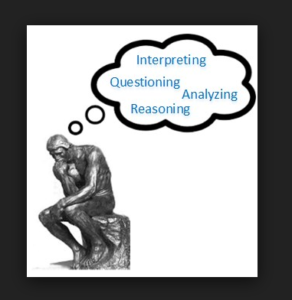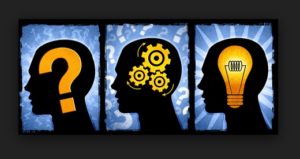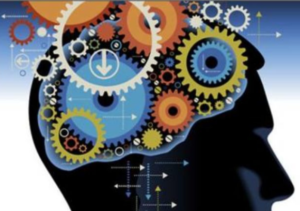Are you looking to be the best critical thinker you can be? Then you need to be like Da Vinci and focus on continuous learning. Let me elaborate.

There are three classes of people: those who see, those who see when shown, and those that do not see.
– Leonardo Da Vinci
No doubt. I am a big fan of great thinkers. My top thinker of all time? It has to be Da Vinci. Why do you ask? For his abilities in learning and creativity, without a doubt. A mathematician. A scientist. An engineer. An anatomist. A creative learner. Always learning and creating.
Do you see? Maybe some of the lessons from Da Vinci will help. So what would be the lessons in critical thinking, learning, and creativity derived from Da Vinci? Here are the ones I continually come back to:
Sketching and note-taking
Over his lifetime Da Vinci created 13,000 pages of sketches and notes. 13,000 pages. By hand, on individual sheets of paper. A sketch in the center, simple and done quickly, the label on top, annotations along the sides, arrows pointing to key content. Sometimes a summary on the bottom.
Related post: How You Are Destroying your Creativity and Imagination
Divergent thinking first
Alone in the first few iterations divergent thinking. Time to generate lots of ideas, and to reflect. Incubate ideas. Ask himself lots of questions. Always observing and studying. Think about the age of Da Vinci … no computers, few books, and few experts in fields of his interests. Just his ability to see and observe using notes to record for further study.

Convergent thinking later
Da Vinci often reviewed his work with respected peers after he had finished incubating his ideas. It was an opportunity to refine his ideas. Time to collaborate. He was way ahead of his time on most topics, so many of his good ideas were rejected.
He didn’t lose his desire or his persistence by the rejections. But remember … 13,000 sketches led to at least three masterpieces. Persistence is a key, isn’t it? Perhaps this is the most important reason we have less creative people.
Build on others
One of the misunderstandings around creativity and imagination is that you have to be utterly original to do it. The truth is all creative people stand on the shoulders of those who came before. Writers learn to write by reading; painting students are sent to museums to copy the masters, while great chefs learn the already tested basics of cooking to create some new dishes.
Innovation stands on a platform that already exists. Yes, inspiration is involved, those flashes of insight, the ah…ha moments. You start with something that already exists and takes it to another level. So relax. Let go of thinking you have to do something original. Take the pressure off. Celebrate that there is all this help available.
Best critical thinker … question everything
Want to think what nobody has ever thought? Start by questioning all assumptions.
There comes a moment in time where everyone agrees with everybody about pretty much everything. For any sized organization that is focused on creating a culture of relentless innovation, hardened dogma is an innovation obstacle they must overcome.
And that starts best with questioning everything, assumptions included.
Pay attention to patterns
Treat patterns as part of the problem. Recognizing a new pattern is very useful, but be careful not to become part of it.
Best critical thinker … observe with all senses
Truly creative people have developed their ability to observe and to use all of their senses, which can get dull over time. Take time to “sharpen the blade” and take everything in. Add thoughts as you go like Seth Godin often does.
Continuous learning
Both creativity and innovation are based on knowledge. Therefore, you need to continually expand your knowledge base. Read things you don’t normally read as often as you can.
Defer judgment
Your perceptions may limit your reasoning. Be careful about how you perceive things. In other words, defer judgment. Let it all hang out.
Da Vinci’s basis for the study was simple observation and notes/questions on his observations. He withheld judgments, either positive or negative, for as long as possible. Particularly his own. He appreciated that judgment would be a block to creativity and new ideas.
Related post: Secrets to Unlocking the Genie in the Creativity Bottle
Widen your experiences
Experience as much as you can. Exposure puts more ideas into your subconscious. Actively seek out new and very different experiences to broaden your idea thinking experience portfolio.
Always carry a book
When waiting: read. It’s not only about reading per se, but it’s also about focus and self-discipline. You need both to get smarter. How can you solve a problem if you can’t focus? And how would you solve it if you fail to commit yourself to the task?
Now, I am talking about reading per se. It improves your verbal-linguistic abilities, creativity, memory, open-mindedness, etc.

Meditate
Again, it’s about focus and self-discipline. It also improves introspective and self-reflective capacities (intrapersonal skills). (How?)
Critical thinker … leave your comfort zone
Take risks. Here is how. Failing is very important in the process of learning.
Do a bit of math every day
Improving your logical-mathematical skills is critical for almost every area of your life.
Always challenge your ideas and points of view
It is a critical thinking and open-mindedness booster.
Stimulate imagination
Da Vinci used divergent thinking to create lots of ideas. Lots of ideas, questions, and curiosity to stimulate his imagination. He minimized the limitations and constraints when using his imagination to think of the solution space to his many questions.
Socialize frequently
Meet people you like and new people as often as possible. Try to have a lot of friends and to create new friendships (care both about quality and quantity). It’s very important for your brain. It improves your emotional intelligence and boosts your social skills. (Related TED video)
Always look for self-improvement
We are never going to be perfect, and this is great so that we always have something to improve. No time to get bored! It makes you smarter because you will know more about yourself.
Save and revisit later
Most of Da Vinci’s sketches were done on individual sheets of paper. Not in a constrained notebook. He understood the value of multiple revisits and connecting, reconnecting, and grouping related facts and observations. An analogy expert. And an uncanny ability to connect several different observations and ideas to create new ideas.
You should know these: Top Notch Educated Person … 12 Traits You Will Recognize
Know yourself
You have to understand when your emotions are getting over your rational thinking. It improves introspective and self-reflective capacities (intrapersonal skills).
Curiosity and questions
Perhaps Da Vinci’s greatest asset was his insatiable curiosity. The more observations and connections of ideas, the more questions, and curiosity. And creative ideas.
Get in touch with art
Painting, literature, sculpture, architecture, cinema, theater, dance, poetry, photography, and so on… It is fun, interesting, fascinating, and makes you smart (expand your problem-solving skills, open-mindedness, etc…). What else?
Engage smarter people
Befriend and engage in conversations with people who are smarter than you. You can expand your knowledge base and vocabulary by simply being around intelligent individuals.
Be open-minded
Being smart involves being open to different viewpoints even if they contradict your own. Be open to learning about viewpoints and concepts that you disagree with so that you become a more well-rounded individual.

Be proactive
Don’t simply rely on watching the news or your professors at school to boost memory, learning ability, focus, concentration, and comprehension.
Visualize your ideal outcome
For example, can you imagine being smarter? The smartest people in the world visualize what they want before it comes into existence. They visualize what they need to do to make it happen. They visualize the steps they took. They visualize the obstacles they faced. So you need to learn to visualize your ideal outcome.
The bottom line
